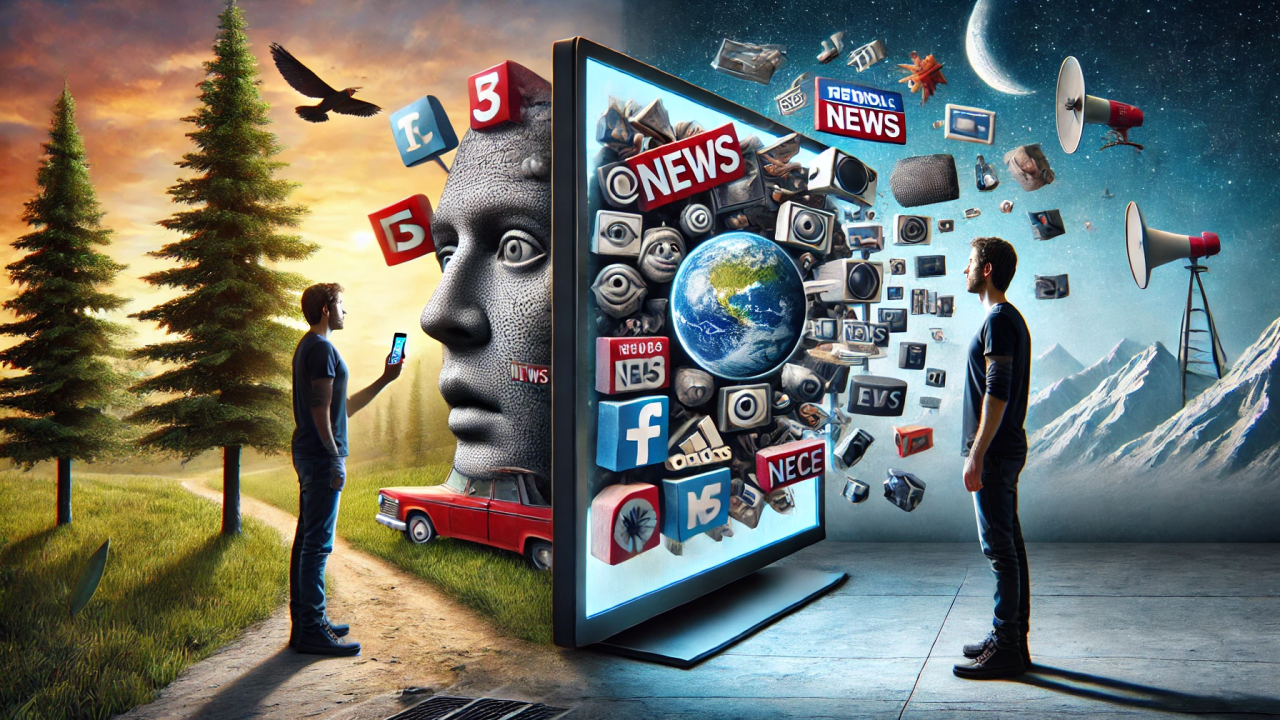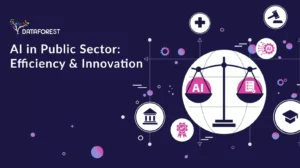Public Concern Grows About AI’s Social Impact
Artificial intelligence (AI) has moved from research labs and tech startups into the daily lives of billions of people. We see it in personalized recommendations on streaming platforms, AI assistants in our smartphones, medical diagnostic tools, automated trading algorithms, and generative systems that create images, videos, and code. While these innovations promise efficiency and progress, they also raise profound social questions.
The pace of adoption has outstripped public understanding and governance, sparking growing concern over AI’s social impact. From job displacement and misinformation to surveillance and bias, citizens are beginning to ask: What kind of society are we building with AI—and at what cost?
This article explores the roots of this concern, the specific areas where social impact is being felt, the voices shaping the debate, and how individuals, companies, and governments might navigate the next decade responsibly.
1) Why Public Concern Is Rising Now
AI has been around for decades, but several factors have amplified public worry in recent years:
-
Generative AI Breakthroughs
Systems like ChatGPT, MidJourney, Claude, and Google Gemini can create human-like content on demand. The ease of producing text, images, and videos has blurred lines between reality and fabrication. -
Ubiquity of AI in Daily Life
Algorithms influence what news we see, what jobs we apply for, which products we buy, and even whom we date. The sheer pervasiveness of AI in decision-making raises questions of transparency and fairness. -
High-Profile Warnings
Tech leaders, ethicists, and policymakers have publicly sounded alarms. Open letters calling for AI pauses, congressional hearings, and regulatory debates put the issue squarely in the public eye. -
Mismatched Regulation
While AI advances at lightning speed, governance structures lag behind. Citizens see powerful technology with limited oversight and worry about unchecked consequences.
2) Key Areas of Social Impact That Concern the Public
a) Job Displacement and the Future of Work
Automation fears are not new, but AI touches cognitive and creative tasks that once seemed safe. Customer support agents, paralegals, writers, graphic designers, and even coders see portions of their roles automated. While AI can augment productivity, the distribution of benefits is uneven, fueling anxiety over widening inequality.
b) Bias and Discrimination
AI systems learn from historical data, which often reflects human biases. Hiring algorithms might downgrade women, healthcare models may misdiagnose minority populations, and facial recognition has shown higher error rates for people of color. Such outcomes erode trust and spark calls for algorithmic fairness.
c) Privacy and Surveillance
AI enables mass data collection and surveillance at unprecedented scales. Governments use AI for predictive policing and citizen monitoring, while corporations harvest data for targeted ads. The boundary between personalization and intrusion grows blurry. Citizens worry about loss of autonomy and anonymity.
d) Misinformation and Deepfakes
Generative AI makes it easy to fabricate videos, voices, and news articles. Political deepfakes, AI-written propaganda, and fake reviews are already circulating online. As truth becomes harder to verify, concerns about democracy, public trust, and social cohesion grow louder.
e) Mental Health and Social Well-Being
AI-driven platforms maximize engagement, often amplifying addictive behaviors, polarization, and echo chambers. Concerns are rising about the impact on teenagers’ mental health, self-esteem, and civic discourse.
f) Economic Inequality
AI disproportionately benefits large corporations with access to data and computing power. Without interventions, many fear a winner-takes-all economy, where wealth concentrates further, leaving workers and small businesses behind.
g) Ethical Use in Critical Fields
AI in warfare, judicial sentencing, healthcare, and education raises ethical red flags. The idea of machines influencing life-and-death or moral decisions troubles the public deeply.
3) How Different Stakeholders View the Social Impact
Citizens
Surveys show rising skepticism. Many welcome AI’s convenience but worry about losing jobs, privacy, and human connection. For some, AI feels imposed rather than chosen—woven into systems they cannot opt out of.
Workers and Unions
Labor groups highlight the need for reskilling, fair transition plans, and worker protections. They argue AI should augment human work, not replace it wholesale.
Companies
Businesses often emphasize AI’s potential to unlock innovation. Yet, reputational risk is real—companies caught with biased AI systems or privacy violations face backlash.
Governments and Regulators
Governments walk a tightrope: encouraging innovation while protecting citizens. The EU has proposed the AI Act, while the U.S. debates a patchwork of guidelines. China pushes state-driven AI oversight. Citizens are watching closely to see whether regulation prioritizes safety or profit.
Academics and Ethicists
Scholars argue for transparency, accountability, and “responsible AI.” They emphasize that social values—not just technical benchmarks—must guide deployment.
4) The Role of Media and Public Perception
Media coverage often oscillates between hype and fear. Headlines about AI curing cancer appear alongside stories of AI stealing jobs or spreading deepfakes. Social networks amplify both utopian and dystopian narratives, creating confusion.
This duality fuels public concern: people simultaneously hope AI might solve climate change or eradicate disease, and fear it might erode democracy or wipe out entire job categories.
5) Public Concerns by Region
-
North America: Focus on privacy, misinformation, and employment disruption.
-
Europe: Stronger emphasis on data protection, consumer rights, and ethical standards.
-
Asia: Concern about surveillance and competition between global AI powers.
-
Global South: Worries about being left behind in AI development and adoption, worsening digital inequality.
6) Examples of AI’s Social Impact in Real Life
-
Hiring Bias: Amazon scrapped an AI recruitment tool that downgraded women applicants.
-
Deepfake Politics: Synthetic videos of politicians circulated during elections in multiple countries.
-
Healthcare Inequality: Studies showed certain diagnostic models underperforming for minority groups.
-
Student Integrity: AI writing tools raised debates over plagiarism and the value of education.
Each of these cases reinforced public fears that AI’s impact is not abstract but tangible and personal.
7) Why Trust Is Hard to Earn
Trust in AI systems is fragile because:
-
They are often black boxes—users cannot see how decisions are made.
-
Failures, even if rare, have high visibility and consequences.
-
Power asymmetries—between corporations/governments deploying AI and individuals affected—create skepticism.
Without transparency, accountability, and choice, the public tends to assume worst-case scenarios.
8) Addressing Public Concerns: Possible Solutions
a) Regulation and Policy
-
AI Bill of Rights frameworks
-
Mandatory transparency about training data and decision-making
-
Independent audits for bias and safety
-
Limits on facial recognition and surveillance
b) Education and Awareness
Digital literacy programs can help citizens spot misinformation, understand how algorithms shape feeds, and protect their privacy.
c) Industry Responsibility
Companies must adopt ethical AI practices, including explainability, human-in-the-loop systems, and equitable access.
d) Public Participation
AI governance should not be confined to tech elites. Public forums, citizen panels, and participatory policymaking can ensure diverse voices shape AI’s trajectory.
e) International Collaboration
Since AI is borderless, global standards are essential to prevent a regulatory “race to the bottom.”
9) Future Outlook: Balancing Promise and Peril
The public doesn’t reject AI outright—they demand it be used responsibly. Surveys show most people support AI in medicine, climate modeling, and education but resist it in warfare, surveillance, and job replacement.
The coming years will be defined by whether governments and companies can close the trust gap. If AI systems consistently demonstrate fairness, safety, and tangible public benefits, acceptance will grow. If scandals and harms dominate headlines, skepticism may harden into resistance.
10) A Playbook for Moving Forward
For Governments:
-
Enact clear, enforceable rules for accountability.
-
Create public funds for AI education and reskilling.
-
Prioritize transparency in AI use within public institutions.
For Companies:
-
Publish transparency reports.
-
Build diverse development teams to minimize bias.
-
Center users in design—prioritizing well-being, not just engagement.
For Individuals:
-
Cultivate AI literacy: know what the technology can and cannot do.
-
Demand transparency from service providers.
-
Participate in civic conversations about AI governance.
11) Conclusion: A Collective Responsibility
Public concern about AI’s social impact is not simply fear of the unknown—it is a rational response to visible risks and structural imbalances. The challenge is not to slow down AI but to steer it wisely.
The path forward requires collaboration between citizens, governments, companies, and researchers. The goal should not be to choose between progress and protection but to design systems where innovation aligns with human values.
If society can navigate this balance, AI may truly become a tool that amplifies human potential rather than undermines it. But if ignored, public distrust could become the biggest barrier to unlocking AI’s benefits.
The debate over AI’s social impact is not just technological—it’s about the kind of society we want to live in. And that decision belongs to all of us.
https://bitsofall.com/ai-disruption-of-the-job-market-whats-changing-whats-next-and-how-to-thrive/
Saying “Thanks” and “Please” to ChatGPT Is Reportedly Costing OpenAI Millions







